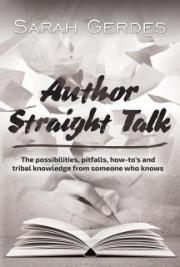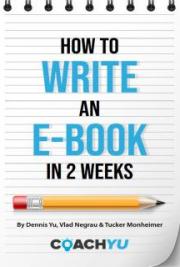
Common Errors That
Lead to Rejection

Common Errors That Lead to Rejection
The aim of every author is to see their work published. Publishing is a means of disseminating information; sharing ideas, discoveries, and perspectives to a broader audience. It lends prestige and opens doors to additional funds and further research.

Most reputed journals are peer reviewed. In this process, only 1% to 10% of all manuscripts submitted to a journal are accepted outright. The rest of them suffer one of the following fates:
Accept with minor revision: This is when your manuscript is scientifically sound and
well written with only a few revisions required to correct language and content.
Accept with major revision: This is when your manuscript is conditionally accepted
provided the major changes in content or organization are made.
Reject but invite to re-submit: This is the outcome when there is usually a problem with the result or methodology of your study. You may also receive this outcome if the manuscript suffers from serious writing deficiencies. Members of the peer review board
take extra time to help authors if they believe that the rejected material was of value, scientifically interesting, and appropriate to the journal. A re-submission will require further refereeing. However, note that the manuscript may still get rejected.
Outright rejection: The rate of outright rejection varies from journal to journal—30% to 90% (very specific or high impact). Some common reasons for outright rejection are
o The submitted manuscript is not within the scope of the journal
o The submission is deemed unethical
o The science is fatally flawed
o The relevance is unclear
Usually, the author should revise the manuscript and look for another journal to submit to.

For non-native authors in particular, writing deficiencies contribute significantly to the dismissal/rejection of manuscripts (point 3). How you write your manuscript affects the organization, presentation, and flow of ideas in the manuscript. Smaller problems like wordiness, paragraph transition, poor syntax and grammar, wrong words, etc. are usually not reasons for rejection as they can be easily rectified by professional editors.
We have developed a list of frequent errors identified in manuscripts that lead to rejection. Note that these errors are described for each general section of a manuscript and assume that the research design has been appropriately chosen and implemented.

Misleading Titles
A misleading title that does not set the limits of a study is a serious writing error. For example, a basic investigation using an animal model should mention in its title that the study is an animal study. Else, it may be misleading to readers scanning the table of contents of the journal.
Inaccurate Abstract
Abstracts are sometimes presented several months before the paper is written. After the paper is written, the abstract should be checked and updated with more recently acquired data. That is, make sure that the results and conclusion in the abstract are the same as the paper.
Incomplete Introduction
As illustrated in our previous posts, an introduction must contain the study question, hypothesis, and study objectives. If the above information is not specified and the importance of the study is not shown, then it is considered as a major writing deficiency.
Careless Methods
In order to avoid writing, authors report previously published methods that are similar to the current study. That is, the author simply reuses the methods section from paper to paper.
Reproducing such material exactly is self-plagiarism. Further, the methods need to be updated to reflect the current research project. It is disconcerting if some results do not relate to or could not possibly be obtained by the described methods.
Omitted Results
Errors while writing the Results are quite a common occurrence. In order to adhere to the word limit, some information is often left out, either intentionally, without justification, or unintentionally. For example, not all study subjects are accounted for or names of statistical tests are not provided for specific analyses.

Illogical Discussion
As discussed in an earlier post, it is important that the Discussion follows a very logical order.
Common errors while writing the Discussion are:
The flow of ideas is disconnected and not well supported
The content is too expansive and wanders from the results
The presentation is biased, and omits key findings from other investigators
Key results are poorly explained
Possible implications/the study’s importance are overstated
The study’s limitations are not described
We will look at some other easily avoidable reasons related to outright manuscript rejection at a broader level and how to avoid them.

Incorrect Journal Selection
We discussed the importance of selecting the correct journal and the best way to go about it. The most common reason for outright rejection is that the submitted manuscript is not within the scope of the journal.
For example, submissions to the Journal of Materials Chemistry will not be accepted for publication if they are outside of the scope of the journal, regardless of the quality or novelty of the science described.
An author wastes valuable publication time if he does not match the subject matter of his paper with the scope of the journal.
How to Avoid
1. Carefully read the scope of the journals found on the Journal’s home page and the
Instructions to Author’s section.
2. Do a search for similar articles

Plagiarism or Self-plagiarism
Presenting someone else’s work as your own, from any source, is known as plagiarism. It is also defined as willful falsification of data, information, or citations in any formal academic exercise.
Plagiarism is usually detected when the writing style used in submitted work is inconsistent.
Electronic detection tools that identify text matches with other sources are also available.
Plagiarism is considered as a serious offense in all circles.
Self-plagiarism, i.e., republication of one’s own work in another journal, without citing the original, is also a common reason for outright rejection.
How to Avoid
1. Always acknowledge sources of ideas through proper referencing
2. Avoid writing templates from paper to paper to save “writing” time
3. Do not submit results that have been published before even in a lower-ranked journal
4. Avoid paraphrasing. That is, taking the ideas of somebody else and expressing them with different words. You must make enough changes so that what you have written is
distinctly different, and you must acknowledge your source.

Insignificant or Inflated Findings
The primary criterion for acceptance of a paper for publication as an Original Research in a high-impact journal is that it must report high quality, novel work and make a significant contribution to its field. Papers reporting results regarded as routine or trivial are usually not accepted for publication. This means that no matter how competently the science reported has been carried out, publication will not be recommended by the referees if the work is considered routine or derivative or if it is unlikely to make a significant impact with the readership of the journal.
Authors tend to report inflated results in order to get published. However, such tactics are usually caught at the time of peer review.
How to Avoid
1. Be aware of your research topic and search for similar results before setting out to
publish, and publish only “new findings” or “significant findings”
2. If your research is novel, clearly highlight the novel properties or applications of the materials reported.
3. Make comparisons with previous work in the field and include articles that have a clear statement of the improvements made to justify publication.
4. Avoid emphasis of statistical significance at the expense of clinical significance
5. For insignificant results, choose lower-impact journals to avoid outright rejections

Ethical Concerns
Ethical concerns about the study are a common reason for outright rejection. Each author is expected to be responsible and adhere to the ethical guidelines laid down in their field of study.
For example, violations or failure to highlight the following guidelines indicate misconduct:
Human/Animal Welfare Problems: Treatment of experimental subjects that does not comply with accepted standards and journal policy; for example, lack of representative sample, absence of voluntary participation of study subjects, absence of approval of study by ethical review committee.
Conflict of Interest: Real or perceived conflict due to employment, consulting, or
investment in entities with an interest in the outcome of the research.
Authorship Disputes: Disputes arising from the addition, deletion, or change of order of authors.

How to Avoid
1. Adhere to scientific and writing ethics. Obtain prospective approval for the study protocol. Do not deviate from the protocol. Obtain approval for amendments as needed before altering the protocol.
2. Indicate that the study had proper approvals. Disclose all potential conflicts to the Editor of the journal and within the manuscript itself.
3. Agree on authorship before writing begins, preferably at the start of the study. Ensure that all authors meet criteria for authorship. Sign publisher authorship forms.

Instructions for Authors Not Followed
Failure to follow the Instructions for Authors can result in delays in the peer review of your work or outright rejection before peer review.
Journal editors have developed these instructions in order to process manuscripts easily and in a timely fashion. Publishers have certain fixed criteria for the type, length, format, and style of manuscripts to be accepted, and adhering to these instructions avoids unnecessary delays in the publication cycle.
How to Avoid
1. Adhere to all the instructions on given by the journal. Typically, take a print out of the journal guidelines and highlight the key points that pertain to your submission.
2. Incorporate all the points at the stage of writing.
3. Prepare a checklist, and before submission, check that all the points have been completed.
4. You can also hire a science editor to do this if you are short of time or do not understand the complicated instructions.

Technical Flaws
If your paper has one or two technical flaws then it is usually not rejected outright; however, if it has a large number of flaws then it is rejected. Common technical flaws are:
A discrepancy between the Abstract and the manuscript
Wrong groups are studied
Wrong statistics (methods used, data analyzed, etc.) are used
The results are statistically significant but not clinically significant
The Discussion is not related to the results
The data presented contradict each other
Conclusions overstate the results and do not answer the study question
Numbers presented in the tables or the text do not add up to what the author states they should
English as a language barrier (poor writing, wrong spelling, wrong grammar, wrong
tense, etc.)

How to Avoid
1. All the authors should read the manuscript at least two times checking for inaccuracies and the above technical flaws.
2. Before sending for publication, have a native-speaking colleague or science editor review your manuscript.
Although grammatical, typographical and spelling errors are usually corrected by copyeditors in the final version of accepted papers, your manuscript will not be corrected before it goes out for peer review. Therefore, to eliminate bias against non-native authors by peer-reviewers your final submission should be proofread before sending for review.
We now focus on how to deal with reviewer comments. To date, there is very little literature advising authors on how to deal with referees’ comments when the manuscript is returned. In fact, much of the probability of publication depends on how appropriately you respond to the referee’s comments. We now list steps on what to do in the following four situations.

Situation 1: Accept with Minor Revision
Example,
“The paper is well written, presents new matter, and can be published with minor revisions: 1. There is a typographical error in the third paragraph.
2. Figure 2 is redundant and can be deleted”
These short and specific comments would include simple reorganizing, rewriting parts for clarity, adding or correcting specific points as directed by the referees. They are usually very easy to deal with and should be corrected quickly.
Proceed with all changes without argument, aiming to get the revised manuscript back to the editor as quickly as possible to generate speedy acceptance.






















